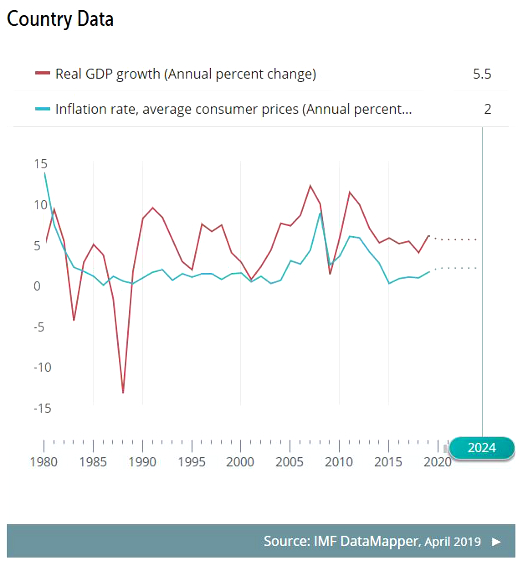Not just annual dog days. Panama’s economy is slow.
Archive photo by Eric Jackson.
IMF staff concludes visit to Panama
by the International Monetary Fund
A staff team of the International Monetary Fund (IMF), led by Alejandro Santos, visited Panama during July 17-23, 2019, invited by the Panamanian authorities. At the end of the visit Mr. Santos issued the following statement:
“While Panama remains among the most dynamic economies in Latin America, the economic recovery has been slower than anticipated. Real GDP grew at an annual rate of 3.1 percent in the first quarter of 2019 (compared to 4 percent in the same period of last year), due to a softening in construction and services. More recent data point to a continuation of a sluggish recovery, leading us to revise down our growth projection for 2019 to 5 percent (from 6 percent estimated in our February visit). Panama’s fundamentals remain solid, with the economy expected to recover and converge to its potential growth of 5½ percent by next year, and inflation edging up to 2 percent over the medium-term. The banking system remains well-capitalized and liquid with low non-performing loans. The external position will continue strengthening over the medium term. The balance of risks to the outlook is tilted to the downside, related to fears of rising trade protectionism, weaker global outlook, and potential pressure on banks’ correspondent relations.
“Preliminary data indicate a decline in fiscal revenues and an acceleration in the implementation of budgetary spending, leading to a fiscal deficit in the first half of the year above the 2 percent of GDP limit established by the fiscal rule for the whole year. In addition, sizable arrears accumulated to suppliers and banks which need to be cleared. The authorities estimate that in the absence of corrective measures, the fiscal deficit could reach almost 4 percent of GDP in 2019. The authorities are committed to corrective measures but fear that a rapid pace of implementation could weaken the ongoing recovery further. Against that background, the authorities expect to reduce the fiscal deficit by over 2 percent of GDP in the next two years, allowing them to observe the deficit limit under the fiscal responsibility law of 1¾ percent of GDP by 2021.
“In June 2019, the Financial Action Task Force (FATF) placed Panama on the list of countries with strategic deficiencies on its anti-money laundering framework. Despite recent progress on financial integrity, including the recognition of tax evasion as a predicate offense to money laundering, the legal framework needs to be further strengthened and its effectiveness needs to be demonstrated. The authorities are fully committed to implementing the recommendations of the action plan agreed with the FATF and aim to be out of this list as soon as it is possible. Sustained efforts to enhance the anti-money laundering framework and tax transparency will be crucial to strengthen Panama’s position as a regional financial center.
“Sustaining inclusive growth over the medium term will require reinforcing the structural reform agenda, especially in education, social security and public health services. Further improvements in fiscal revenues and stricter expenditure controls will be required to improve macroeconomic management, create the necessary fiscal space to cover the cost of future reforms, and strengthen fiscal discipline. We encourage the authorities to upgrade the statistical framework to facilitate sound economic decision making at all levels of government.”
The mission is grateful to the authorities for their kind hospitality, excellent cooperation and open discussions.
[End-of-Mission press releases include statements of IMF staff teams that convey preliminary findings after a visit to a country. The views expressed in this statement are those of the IMF staff and do not necessarily represent the views of the IMF’s Executive Board. This mission will not result in a Board discussion.]

These links are interactive — click on the boxes













